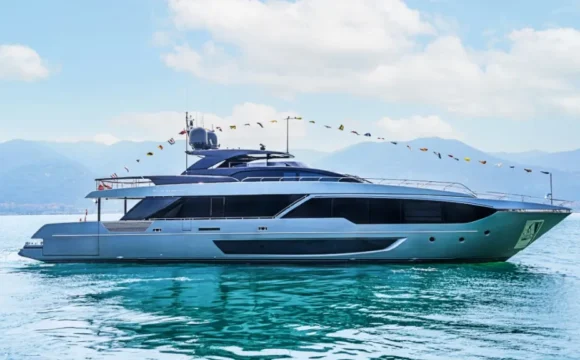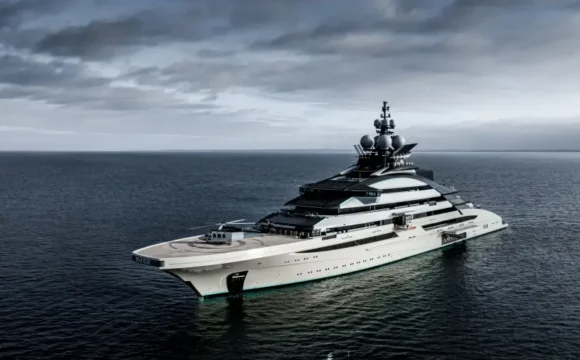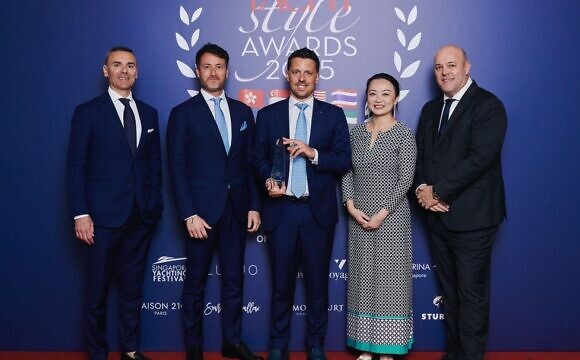ฝันให้ใหญ่ แต่เริ่มคิดไปจากจุดเล็กๆ คือหลักการสำคัญในการขับเคลื่อนคลื่นลูกล่าสุดของ “pocket explorers" เรือขนาดเกือบ 90 ฟุต ที่ยังไม่นับรวมเฮลิคอปเตอร์และกลุ่มลูกเรือขนาดใหญ่ มีความสามารถในการเดินทางรอบโลกที่คล้ายคลึงกับเรือยอทช์ขนาดใหญ่ ซึ่งรวมถึงระยะทางและความทนทานในทะเลพร้อมทั้งมีศักยภาพในการอาศัยอยู่ในระบบไฟฟ้าระหว่างวันหรือหลายสัปดาห์ได้
ผู้ผลิตรถในตำนานอย่าง Nordhavn, Grand Banks และ Marlow ร่วมมือกับแบรนด์ใหม่อย่าง Sirena, Numarine, Bering, Azimut และบริษัทอื่นๆ ที่ละทิ้งการออกแบบแบบยุค 1970 เพื่อให้ได้รูปลักษณ์ร่วมสมัยที่มีสไตล์มากขึ้น ตัวอย่างเช่น Magellano 60 ของ Azimut ประกอบ forefoot ให้แหลมขึ้นเพื่อความปลอดภัยในการล่องเรือ โดยมีพื้นที่เปิดโล่งขนาดใหญ่ทั้งภายในและภายนอก ตัวเรือ “Dual-Mode" ขนาด 60 ฟุตช่วยให้เรือสามารถแล่นได้ 26 นอต และเดินทางได้ถึง 1,020 ไมล์ทะเลที่ 9 นอต นอกจากนี้ยังได้รับการออกแบบให้ทำงานโดยใช้เชื้อเพลิงชีวภาพ HVOlution ซึ่งช่วยลดการปล่อยก๊าซคาร์บอนไดออกไซด์ได้ถึง 80 เปอร์เซ็นต์
สำหรับผู้ที่ชื่นชอบพื้นที่เล็กๆ แต่ต้องการพื้นที่มากกว่า Magellano 60 ต้องมองหาเรือโมเดล Numarine 26XP ที่ได้รับการออกโครงเรือแบบ planing สามารถทำความเร็วได้ 31 นอต ด้วยฟีลการเคลื่อนที่ช้ากว่า มาพร้อมกับท้ายเรือที่สูง 85 ฟุต มีส่วนโค้งสูง ห้องกัปตันแบบปิด และหน้าต่างบานใหญ่ ถ้ามองจากมุมมองการผจญภัย คุณลักษณะที่สำคัญที่สุดของรุ่นกระจัดคือระยะ 3,000 ไมล์ทะเลที่ระดับ 9 นอตและกระแสลมสูง 7 ฟุต ทำให้ไม่สามารถเดินทางข้ามมหาสมุทรได้ แต่ยังสามารถเข้าถึงท่าเรือน้ำตื้นได้ เช่นเดียวกับ Magellano’s การตกแต่งภายในจะเน้นไปที่พื้นที่และความสะดวกสบาย มีห้องนอน 4 ห้องซึ่งรวมถึงห้องนอนขนาดใหญ่พิเศษด้วย

ในส่วนของกลุ่มที่เป็นราชาแห่งนักสำรวจ คือ Arksen 85 ด้วยโครงสร้างทั้งหมดที่ทำจากอลูมิเนียมและระยะทางการเดินทางได้สูงสุดถึง 7,000 ไมล์ทะเล ความโค้งสองเท่าของตัวเรือที่มีรูปทรงพิเศษเพื่อการออกสำรวจทะเลอย่างจริงจัง ด้วยอัตราส่วนการกระจัดต่อความยาวที่ต่ำช่วยเพิ่มประสิทธิภาพในการเดินเรือภายใต้สภาพพื้นน้ำทะเลหลายๆ แห่ง Project Ocean รุ่นไฮบริดที่จะเปิดตัวเร็วๆ นี้ มาพร้อมกับเครื่องกำเนิดไฟฟ้า เครื่องยนต์ไฟฟ้า และพลังงานแสงอาทิตย์ แม้ว่าการตกแต่งภายในจะดูมีสไตล์น้อยกว่า Magellano’s และ Numarine’s แต่ก็ยังดีไซน์ของพื้นที่เปิดกว้างเพื่อการใช้งาน และมีพื้นที่สำหรับเก็บของเล่นทางน้ำและเรือเล็กๆ Arksen จึงเหมาะสำหรับการเดินทางและการท่องเที่ยวที่จุดหมายปลายทาง

บทความโดย Julia Zaltzman
Dream big, think small. That’s the maxim driving the recent wave of sub- 90-foot “pocket explorers" that—minus helicopters and massive crews—have similar globe-traversing capabilities of full-size explorer yachts, which combine range and seaworthiness with the potential to live off the grid for days or even weeks.
Legacy builders such as Nordhavn, Grand Banks, and Marlow have been joined by newcomers Sirena, Numarine, Bering, Azimut, and others that eschew the 1970s trawler aesthetic for a more stylish, contemporary look. Azimut’s Magellano 60, for instance, pairs a sharp forefoot—for good seakeeping—with large open spaces across the interior and exterior. The 60-footer’s “Dual-Mode" hull allows it to hit 26 knots and achieve a range of 1,020 nautical miles at nine knots. Plus, it’s designed to run on HVOlution biofuel, reducing CO2 emissions by 80 percent.
For those who still appreciate a small footprint but need more space than the Magellano 60 offers, the Numarine 26XP has been designed on both a planing hull, capable of 31 knots, and a slower, displacement running surface. The intrepid 85-footer features a tall bow, an enclosed pilothouse, and copious windows—though from an adventuring standpoint, the displacement version’s most important attributes are its range of 3,000 nautical miles at nine knots and a seven-foot draft, which enables not only transoceanic travel but also access to shallow waters when you arrive in port. Like the Magellano’s, the interior is all about space and comfort, with four staterooms that include a full-beam primary.
The king of the pocket explorers, though, is the Arksen 85, with its all-aluminum construction and range of up to 7,000 nautical miles. The chiseled, double-curvature in the hull points to a no-nonsense expedition design, but it is the low displacement-to-length ratio that increases efficiency across multiple sea conditions. The soon-to-be-launched hybrid version, Project Ocean, includes generators, electric engines, and solar power. While the interior is less stylish than the Magellano’s and the Numarine’s, it’s equally as open and functional. And with space for toy and tender storage, the Arksen is equipped for the journey and the destination.
The article by Julia Zaltzman








